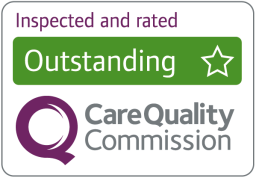Health benefits and risks of the patch
To decide if the patch is right for you, there are different health benefits and risks to think about. It can reduce your risk of some cancers but can increase your risk of blood clots (thrombosis) and breast cancer.
Health benefits
Not all the changes made in your body when using the contraceptive patch will be negative. In fact, there are some significant benefits.
Improve or reduce acne
While the oestrogen in the contraceptive patch can reduce the oil production of your skin cells, the progestogen can increase oil production. These changes can affect your skin, particularly if you have acne.
Reduce heavy bleeding
The hormones in the contraceptive patch stop the lining of your uterus from building up as it would usually. When you have a bleed on the patch, you’ll have less blood and less uterine lining to come out, and so you’ll have reduced bleeding compared to your normal period.
Reduce pain from endometriosis
Endometriosis means you have the same cells that make up the lining of the womb in other areas of the body, such as on the ovary or on the bowel.
When you have a period, you may bleed in these areas too, which can irritate the tissues around these areas and be painful.
If you use the patch in a way that stops bleeding or means you have a shorter, lighter bleed, then you can also reduce bleeding from areas of endometriosis, reducing the pain.
Reduce effects of polycystic ovary syndrome
PCOS (polycystic ovary syndrome) is associated with higher levels of androgens.
Androgens are a family of hormones that include testosterone. At higher levels, they can cause symptoms such as excessive hair growth or acne.
The oestrogen in the patch can help balance the levels of androgens, which means it can reduce or stop some symptoms of PCOS, including:
making skin less oily
reducing hair loss on the head
reducing hair growth on other areas of the body
Reduce the risk of ovarian, endometrial and colon cancer
The combined pill contains very similar hormones to the contraceptive patch. Studies that show the effects of the combined pill are also very likely to show the effects of the contraceptive patch.
36 international studies of the combined pill were recently brought together, and the information gathered showed that:
taking the combined pill or contraceptive patch for 10-15 years reduces the risk of cancer of the lining of the uterus by 50%. This benefit may continue for up to 30 years after stopping the pill or patch
taking the combined pill or contraceptive patch reduces the risk of cancer of the colon and rectum by 19%
Health risks of the contraceptive patch
While there are many potentially positive changes to your body using the contraceptive patch, there are also some possible risks.
Before being given the contraceptive patch, your GP or health professional will ask you some questions about your medical history and your family.
See
Blood clots in the leg or lung
The risk of blood clot (thrombosis) in the leg or lung of a healthy young person is low. About 2 in 10,000 people a year experience this.
If you use the contraceptive patch, your risk of thrombosis in the leg or lung increases slightly, up to 5-12 in 10,000 people a year.
The risk of thrombosis is also affected by age, whether you smoke, and your family history. So, the patch isn’t recommended for people who:
are over 35 and who also smoke
have a family history of thrombosis under the age of 45
have a BMI of over 35
Long flights increase this risk:
The risk of thrombosis increases in situations where you have limited mobility, which means not being able to move easily, such as on a plane or long journey.
If you’re using the patch and taking a long distance flight of more than 8 hours, try to make sure that you get up and walk around regularly during the flight.
High altitudes also increases the risk
The risk of thrombosis also increases if you’re trekking to high altitudes (over 4500m) for more than 1 week.
To cope with the low oxygen levels at high altitude your body produces extra red blood cells, which can increase your risk of thrombosis.
Consider changing your method of contraception if you’re going to be at high altitude for longer than a week.
Surgery can increase this risk:
If you’re having surgery that means that you’ll be in bed and have limited movement for a few days, you should discuss whether to stop using the patch before your operation with the surgeon.
Heart disease
The contraceptive patch increases blood pressure by about 5%. Increased blood pressure means there’s a higher chance of heart disease. You’ll be advised against taking the contraceptive patch if you have any risks of heart disease, including:
high blood pressure
a BMI over 30
if you’re over 35 years old and a smoker
Breast cancer
As the patch uses the same hormones as the combined pill, we expect it to have the same effect on the body. The pill slightly increases your risk of breast cancer while you’re taking it, and for up to 5 years after you stop taking it. It’s likely the patch does too.
This is because the hormones in it may encourage some cells to multiply more than normal.
The risk is small and the research into the pill shows it causes about 14 extra cases of breast cancer in every 10,000 women who take it.
To put this in context:
in people who do NOT use the pill – about 40 in every 10,000 will probably develop breast cancer between the ages of 30 and 39
in people who DO use the pill – about 54 in every 10,000 will develop breast cancer between the ages of 30 and 39. We’d expect the same effect from the patch.
If you have a family history of breast cancer, then you already have a higher risk of breast cancer than the general population. It’s not clear whether the patch adds to this. Unless you have a very strong family history of breast cancer, the benefits of hormonal contraception often outweigh the risks.
Your doctor will discuss the risks and benefits of the patch with you, based on your personal family history.
Cervical cancer
The combined pill, and so probably the contraceptive patch, slightly increases your risk of cervical cancer while you’re taking it, and for up to 5 years after you stop taking it.
Everything you wanted to know about sexual health and wellbeing - your questions answered by our expert team.



